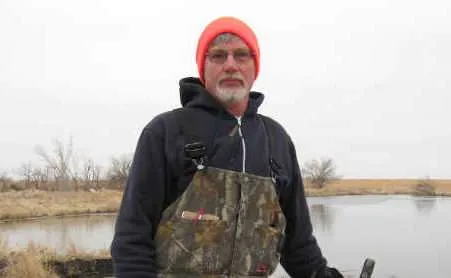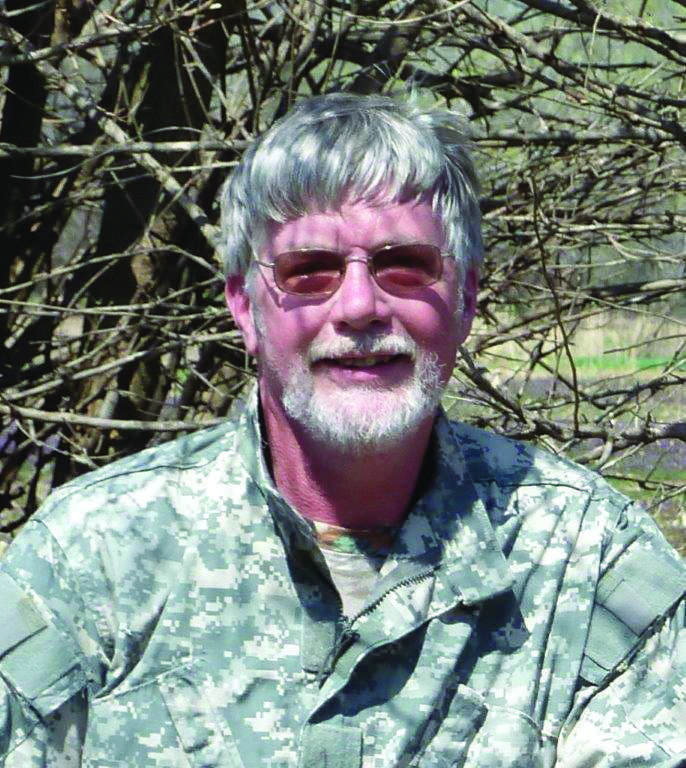Show me a Midwesterner who doesn’t have some sort of love-hate relationship with snow, and I’ll show you the rock they have lived under. It seems as though a person either love it or hates it, and for some of us it depends upon the day. It’s hard to explain how something that makes the landscape suddenly seem so sparkling clean and pure can turn on you in an instant and ruin your day. I was reminded last week how much I love to watch snow fall and how beautiful it makes everything it touches, but also how much I hate removing it from my driveway. I’m kind of a purist, in that I believe God put it there and I don’t want to shovel it and take away any satisfaction He might get from taking it away himself! Yes, to the traveler, home owner, maintenance man and commuter, snow is often an unwelcome inconvenience. To the outdoorsman, however, snow opens up a whole new world of opportunities.
For the outdoors photographer or painter there is no other canvas that compares to an outdoor scene sporting a fresh snowfall. Suddenly, as if by magic, the mundane becomes majestic, the drab becomes dynamic and the everyday becomes extraordinary. Outdoor spots we pass daily with no recognition suddenly become scenes from a calendar. Like the lava lamps of days gone by, the look of the landscape slowly changes from hour to hour with the wind.
Obviously, skiers and snowboarders live for fresh snow. After an overnight snowfall, hills too steep to climb become mere carnival rides beneath their feet. Cross country skiers can, in one day, see country it would take them several days to see on foot without the snow. And let’s not forget the farmers; around one foot of snow equals one inch of rain and snow supposedly brings with it good nutrients too, so after a couple dry years like we’ve had, all this snow is more than welcome for our Kansas wheat and alfalfa.
Hunters and trappers can benefit greatly from a fresh snowfall. Tracks of deer, coyotes, bobcats and other game animals are tough to spot in our often-dry Kansas soil, so trying to learn their movement patterns can rely on being fortunate enough to see the animals themselves. Remember going to dances back-in-the-day when your hand was stamped with a mark that only showed up under a special “black light?” That mark was there the whole time but only became visible when put under the light. Just like the black light, snow suddenly shows tracks of wildlife that have been traveling those same paths for months, but leaving no visible signs.
After a significant snowfall a few years ago, I spent time scouting an area I still had yet to trap. It was a soybean stubble field along the river where my wife harvested her first deer several years before. Besides hordes of deer tracks, I followed 2 sets of bobcat tracks as they meandered back and forth across the field and between several freshly made brush piles. I tracked a coyote for several hundred yards and was able to observe exactly how it related to certain land features. I followed coyote tracks on a frozen drainage ditch and could see where it had stopped to nose around under logs and other attractions. Its tracks showed me cattle trails it had traveled along the steep banks and where it had entered and left the ditch. Closing my eyes, I could almost see these animals as they left the footprints that held my attention.
So, the next time it snows, or before this current snow all melts, after you’ve shoveled the driveway, cleaned the walks, swept the deck and cursed the weatherman, grab your camera or walking stick and head for the woods. It will definitely influence your relationship with the “white stuff” as you continue to Explore Kansas Outdoors
Steve can be contacted by email at stevenrgilliland@gmail.com.




